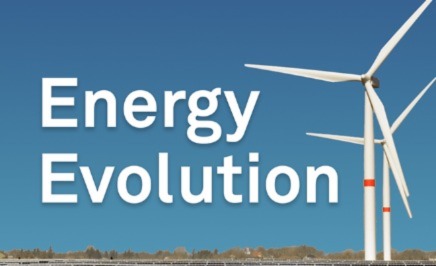Can the DOE spur carbon capture innovation in time to aid climate crisis?

Can the DOE spur carbon capture innovation in time to aid climate crisis?
The International Energy Agency, in its road map for achieving net-zero emissions by 2050, set a near-term target for the deployment of carbon capture capacity at 1.7 billion metric tons by 2030, a level that is more than 40 times the global capacity in 2021. The most significant action the US has taken towards reaching that goal has been to provide funding for various types of carbon management technologies and infrastructure through the bipartisan infrastructure law. Specifically, the bill gives the Department of Energy $12.1 billion for carbon projects.
S&P Global reporter Brandon Mulder spoke with DOE's Brad Crabtree, Assistant Secretary for Fossil Energy and Carbon Management, whose office is tasked with allocating that $12 billion to help jumpstart the carbon capture industry. They spoke about the DOE's priorities, the new Carbon Negative Shot initiative and possible enhancements to the federal 45Q tax credit.
Stick around after the interview for Chris van Moessner with the Market Minute, a look at near-term oil market drivers.
This podcast was produced by Jasmin Melvin in Washington and Jennifer Pedrick in Houston.
45Q, financial uncertainties hinder capital flow for CCS deployment: panel
IPCC report underscores importance of carbon removal to reach 1.5-degree goal
Clean energy boom leaves fossil spending behind as inflation, climate woes weigh: IEA
More listening options:

Podcasts
Cyber threats are mounting for utilities' critical infrastructure assets globally. If used by savvy hackers, AI also provides new tools for those trying to disrupt power supply or extract data. Decentralization of assets through the rollout of renewables is growing the attack vector for malign actors, NERC SVP Manny Cancel tells Energy Evolution correspondent Camilla Naschert. Cybersecurity expert Andrew Ginter of Waterfall Security lays out the threat landscape and why IT teams and engineers need to layer their prevention approaches. Subscribe to Energy Evolution to stay current on the energy transition and its implications. The show is co-hosted by veteran journalists Dan Testa and Taylor Kuykendall. More listening options: No content (including ratings, credit-related analyses and data, valuations, model, software or other application or output therefrom) or any part thereof (Content) may be modified, reverse engineered, reproduced or distributed in any form by any means, or stored in a database or retrieval system, without the prior written permission of Standard & Poor's Financial Services LLC or its affiliates (collectively, S&P).

Podcasts
India's energy transition strategy encompasses greater adoption of a wide range of renewable fuels to go with baseload coal for decades to come, with new policies on CCUS, carbon markets and power reforms set to play a role in the decarbonization of the third largest greenhouse gas emitter of the world. In this Platts Future Energy podcast, Consulting Executive Director, Energy Transition Gauri Jauhar, Managing Editor, Global Compliance Carbon Pricing Agamoni Ghosh, and Associate Director, Research Mohd. Sahil Ali, join Editor, Energy Transition Ruchira Singh, to discuss the journey so far and the likely future landscape of policies, market development and trends post the mid-2024 general elections. More listening options: No content (including ratings, credit-related analyses and data, valuations, model, software or other application or output therefrom) or any part thereof (Content) may be modified, reverse engineered, reproduced or distributed in any form by any means, or stored in a database or retrieval system, without the prior written permission of Standard & Poor's Financial Services LLC or its affiliates (collectively, S&P).

Podcasts
Wrapping up the series of episodes featuring interviews gathered at CERAWeek by S&P Global, co-host of Energy Evolution Taylor Kuykendall shares bits of conversations with executives from new, innovative companies across different parts of the battery materials supply chain. Guests on this episode are: Gabi Knesel, a senior vice president at Locus Fermentation Solutions Mahesh Chunduru, CEO of Momentum Technologies Srini Godavarthy, CEO of Li Metal John Busbee, the CEO and co-founder of Xerion Advanced Battery Corp. Subscribe to Energy Evolution to stay current on the energy transition and its implications. Veteran journalists Dan Testa and Taylor Kuykendall co-host the show. More listening options: No content (including ratings, credit-related analyses and data, valuations, model, software or other application or output therefrom) or any part thereof (Content) may be modified, reverse engineered, reproduced or distributed in any form by any means, or stored in a database or retrieval system, without the prior written permission of Standard & Poor's Financial Services LLC or its affiliates (collectively, S&P).

Podcasts
Americans love pick-up trucks, and the original equipment manufacturers (OEMs) that make them rely on their relatively high profit margins to fuel earnings. Darragh Punch joins EnergyCents with hosts Hill Vaden and Sam Humphreys to discuss North America’s love affair with pick-up trucks and why electrifying them could be so important to mass EV adoption in the United States. Learn more about S&P Global Commodity Insights energy coverage at: https://www.spglobal.com/commodityinsights/en Join the conversation at energycents@spglobal.com More listening options: No content (including ratings, credit-related analyses and data, valuations, model, software or other application or output therefrom) or any part thereof (Content) may be modified, reverse engineered, reproduced or distributed in any form by any means, or stored in a database or retrieval system, without the prior written permission of Standard & Poor's Financial Services LLC or its affiliates (collectively, S&P).